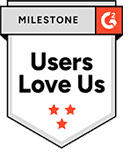
With the new FASB/IFRS lease accounting standards, significantly more assets and liabilities must now appear on the balance sheet. Yet, some businesses still aren’t using lease accounting software to help with the complex task of managing their lease portfolios.
What are some of the lease accounting auditing risks that arise when you don’t use a software solution?
Exposure of lease accounting auditing risks
The new standards are designed to expose lease accounting auditing risks and reveal if an organization lacks the proper checks and balances in their accounting process.
No one wants to find out through an audit that they’ve been doing their lease accounting all wrong. Yet that is exactly what can happen when you do your accounting manually or with a spreadsheet application.
The truth is, the risk of failing an audit is greatly increased when you don’t have a software system in place that mirrors your lease accounting policies and procedures.
Underestimating lease complexity
People often underestimate the difficulty of accounting for all their lease assets and liabilities. Even for businesses with a relatively small lease portfolio, facilities and equipment are the second biggest cost (behind the #1 cost, people).
Once you start breaking down a portfolio and digging into the details, you may be surprised at the complexity of the leases and the costs associated with them. Not only are there different classes of assets (such as real estate and equipment) and different types of leases (operating and finance), but all are calculated differently.
For example, real estate lease are very complex transactions, with common area charges and other details that must be reported accurately. Leasing office space might require complex calculations for how the building’s tenants divide costs such as:
- Cleaning the lobby and other shared areas
- Trash removal
- Parking lot maintenance
- Lawn/Landscape care
There are many other important lease details that are easy to overlook. For example, you may have some embedded leases that are part of a larger contract, such as an IT support services agreement included in an equipment leasing contract.
Unlike manual accounting, Visual Lease puts a proven process in place for capturing all these pertinent data points.
No audit trail for tracking change management
When you use a spreadsheet or calculators, there is no audit trail to help you track your change management process. That means you have no proof you’ve followed the policies and procedures you’ve put in place for change management, approval flows, and other lease accounting requirements.
For example, lease data changes need to be recorded and tracked as they happen, so that if an audit takes place — for a credit evaluation, a bank loan, shareholder reporting, or other purposes — you can prove that everything is in order and up to date.
Visual Lease reduces lease accounting auditing risks by providing an audit trail that thoroughly documents your change management process, including:
- Who made a change
- The date and time the change was made
- Whether approval was needed for the change and, if so, who approved it
- If the change was required due to a data error or to show a change in lease management
(Read more about changes to leases in our blog on lease accounting remeasurements.)
Lack of controls
In lease accounting, everything is about controls and making sure you are consistent across your accounting process.
But with a spreadsheet or manual accounting process, there is not much you can do to control who can see the data or make changes to your lease records, which exposes your business to lease accounting auditing risks.
Visual Lease software helps to keep your data secure with password protection and a wide range of authentication features you can use to manage access, user roles, and permissions for your lease accounting system.
(Read more about lease accounting data security features.)
No one place for your data
If you’re using a spreadsheet or calculators and manually entering the information in your balance sheet, you lack an important resource: a single data repository that includes all the supporting evidence behind it.
With Visual Lease, you get a single-source repository that brings all your lease data together for easier tracking, change management, reporting, and verification should an audit need to be done.
Lack of notifications for important events
When you’re doing your lease accounting manually, you don’t have the ability to flag events and set notifications for important dates and events, such as:
- Lease renewals
- End dates
- Payment increases
- Opt in/out deadlines
With Visual Lease software, you can have the system alert you to important dates so you can stay on top of lease changes that have an impact on your liabilities.
Lack of visibility into location-level costs
Without software for administering and maintaining your lease portfolio, you may not be fully aware of the cost of leases at the location level.
For example, one customer had a warehouse that was paying $1,600 a month to lease a forklift — and had been doing so for eight years! For that amount of money, the company could have purchased the equipment several times over or leased a newer forklift with all the latest features.
Visual Lease provides visibility into these types of expenses so you can identify business risks as well as leasing accounting auditing risks. You can also set up the system to alert you to lease renewals and remind you to review the costs, to see if they still make good business sense.
Human error and incomplete data
Recording all your lease data and doing calculations by hand is not only difficult and time consuming — the chance of human error increases your lease accounting auditing risks.
A single typo or a misplaced decimal point can throw everything off. If you do business in other countries and must deal with multiple currencies, having to figure out the calculations on your own is an added challenge, with added risk of human error.
In addition, with the new lease accounting standards, more than 40 different types of data must be tracked to do the required calculations. Unless you have a very simple lease portfolio, how do you know which fields you need?
Visual Lease software guides you through the process using tried and true calculations that have been validated by more than 700 customers and our industry-leading accounting partners.
Plus, having already helped public companies successfully transition to the new FASB/IFRS standards, Visual Lease has best practices built into the solution.
To learn more about how the Visual Lease platform can help you avoid common lease accounting auditing risks, give us a call.























